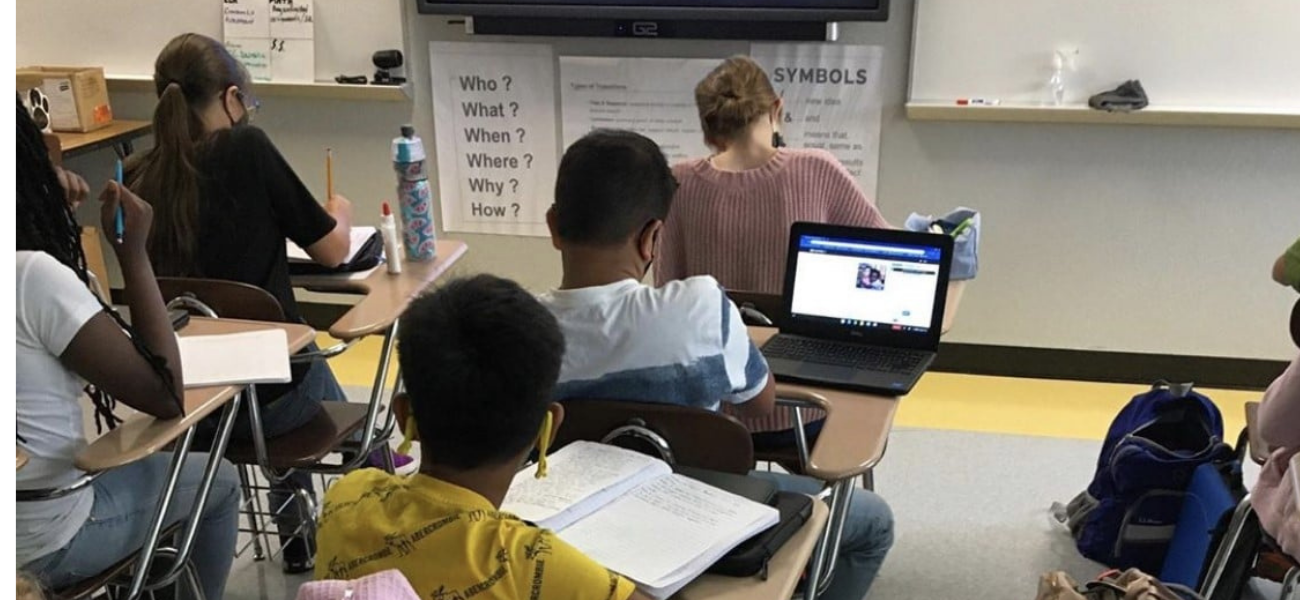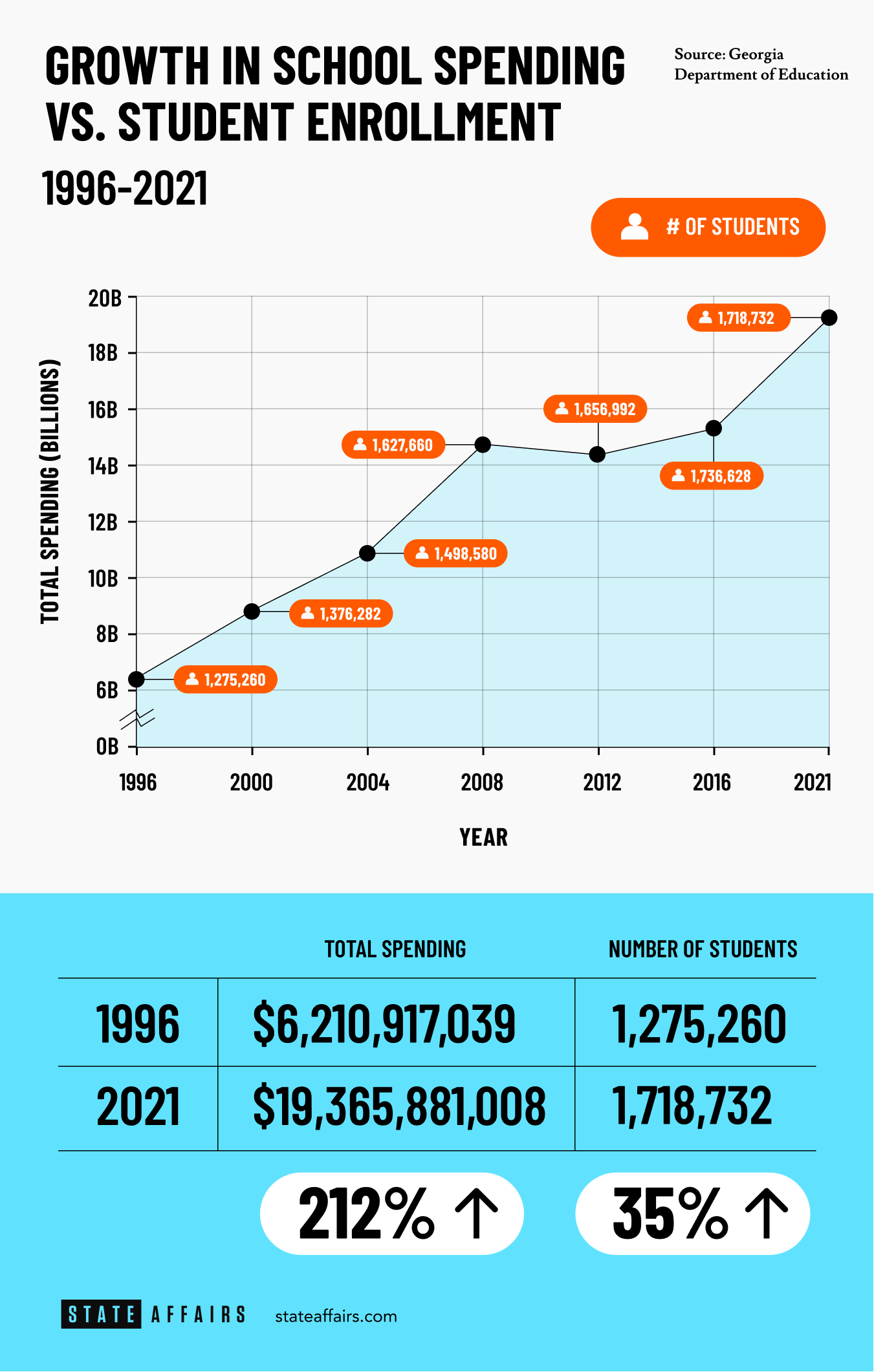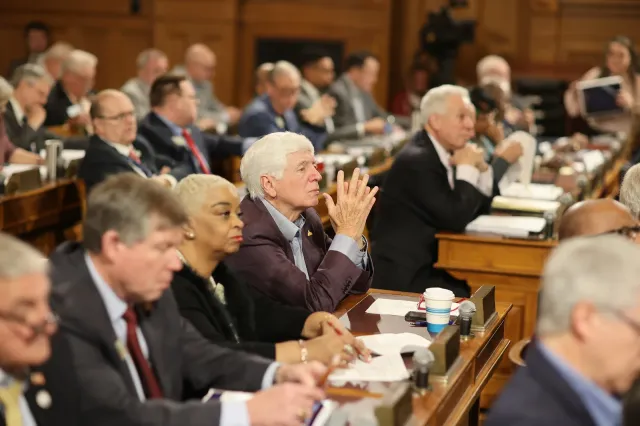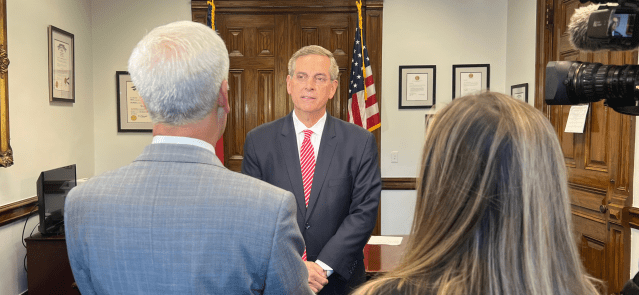Stay ahead of the curve as a political insider with deep policy analysis, daily briefings and policy-shaping tools.
Request a Demo
Credit: Georgia Department of Education
- State lawmakers and experts disagree on how to update Georgia’s 40-year-old formula for funding public k-12 schools.
- Some point to low grades among schools with high per-student spending as evidence more money might not help struggling schools.
- Others argue additional funds for low-income students could promote smaller class sizes and more teacher attention.
Paying for Georgia’s roughly 2,300 public k-12 and charter schools ranks among the state’s most important taxpayer costs. At $12 billion this year, state spending on schools dwarfs other crucial expenses like Medicaid, law enforcement and mental-health service.
Why, then, have state lawmakers not agreed on how to update Georgia’s nearly 40-year-old system for divvying up public-school dollars – particularly since it doesn’t factor in the funding needs of more than 500,000 students living in poverty and other underprivileged situations?
While some lawmakers believe schools should receive more money earmarked for low-income students, others point to low grades at many high-spending schools as evidence that adding money to the estate’s education budget might not help turn around struggling schools.
State Affairs breaks down the debate over how to improve school funding for low-income students in Georgia.

Spending on Georgia’s k-12 and charter schools has tripled over the past 25 years and outpaced the increase in student enrollment. (Credit: Brittney Phan for State Affairs)
Georgia spent nearly $20 billion dollars in state, federal and local taxes on public schools in the 2020-21 school year, rounding out to an average $11,267 spent on each student. At the same time, more than half of all elementary and middle-schools have either fallen behind or struggled to meet grade-level standards in math, language arts and other courses, state data shows.
Lagging academic progress at many schools with high per-student spending has prompted some experts and lawmakers to question whether schools would really benefit from additional education dollars.
“One thing that’s clear is there’s not really a correlation between how much money is spent and what the test scores are,” said Kyle Wingfield, president and CEO of the Georgia Public Policy Foundation. “I don’t think (the funding formula) is the most efficient way to go about it.”
Of the top 20 Georgia school districts with the highest per-student spending, only one of them received a “B” grade on the most recent school report card, an assessment tool that tracks test scores, student learning progress and graduation rates, according to the state Governor’s Office of Student Achievement.
State data for 2019 – the last complete year of data before the COVID-19 pandemic scrambled test scores and accountability rules – also shows a largely inverse relationship between per-student spending and the accountability letter grades that districts received. On average, the higher the grade, the less those groups of schools spent on each student.

State data shows per-student spending was higher on average for school districts that earned lower scores on the the state’s annual school report card assessments in 2019. (Credit: Beau Evans for State Affairs)
Georgia House Appropriation Chairman Terry England (R-Auburn), who leads budget talks in the General Assembly, highlighted the gap between grades per-student spending as reason for a cautious approach to revising the state’s school-funding formula – despite regular requests from local school officials and teachers for more money.
“We hear that quite often,” said Georgia House Appropriations Chairman Terry England (R-Auburn). “But the thing that no one can ever counter … is I can take you to a school system very close to me right now that is nowhere near the highest spender per student in the state, but is any given year either the first or second-rated school system.”
On the flip side, some lawmakers and experts have questioned the logic of tying per-student spending with test and progress measures when making decisions on funding Georgia’s public schools.
Several national and Georgia-centric studies show poverty and other factors affecting low-income students can dampen academic achievement, regardless of a school’s per-student spending. In 2020, researchers at the University of Georgia and the University of Arkansas found per-student spending “did not appear to influence educational achievement as much as other factors” such as poverty rates and classroom sizes.
“I completely understand folks that see the dollar amounts and think that’s too much money,” said Stephen Owens, a senior policy analyst with the nonprofit Georgia Budget and Policy Institute “I think that’s a fundamental understanding of how much more expensive it is to live in Atlanta or Decatur.”

State officials counted 541,000 Georgia students in 2021 as “directly certified” – a key marker of student poverty – who qualified for free meals, food stamps, housing assistance or were homeless. (Credit: Georgia Governor’s Office of Student Achievement)
Rather than handing kids money, supporters of including low-income student needs in Georgia’s funding model say the dollars could target specific areas such as by shrinking teacher-student ratios, adding more school counselors, widening internet access and shoring up budgets for buses to make sure kids don’t have a hard time just getting to school.
That approach showed promise via a state-run office set up in 2018 for education specialists to work one-on-one with a handful of struggling schools, most of which enroll large numbers of low-income students. Many of those schools saw test scores improve before the office collapsed in 2020 amid internal strife.
Whether the solution is to increase spending on low-income students or just shuffle around money already in the budget, some lawmakers like state Sen. Elena Parent (D-Atlanta) argue that it’s past time for the legislature to seriously tackle the question of how to update Georgia’s school-funding formula.
“In Georgia, we do need to spend more,” Parent said. “But how you do it is very important.”
What else do you want to know about the costs and taxpayer funding of Georgia’s public schools? Share your thoughts/tips by emailing: [email protected].
Gov. Kemp calls on state agencies to be fiscally restrained amid record $16.5B surplus
The Gist Gov. Brian Kemp asked the state’s 51 government agencies for continued fiscal restraint when drafting their amended fiscal year 2025 and 2026 budgets. Most agencies adhered to his request even as the state’s general fund surplus hit a record $16.5 billion last month. Forty-five agencies, excluding state courts, followed the governor’s instructions to …
Georgia defies bomb threats as election chief declares a “free, fair and fast” vote amid record turnout
ATLANTA – Despite dealing with over 60 bomb threats, Georgia’s election chief said Tuesday the state’s general election went smoothly. Georgia had a record turnout with nearly 5.3 million people voting, Secretary of State Brad Raffensperger told reporters. Election officials in the state’s 159 counties have until 5 p.m. to certify votes. “We had a …
In the (state)house: Meet the newest members of the Georgia legislature
When lawmakers reconvene at the state Capitol on Jan. 13, there’ll be a cadre of new faces in the 236-member Georgia General Assembly, one of the nation’s largest state legislatures. All 236 statehouse seats were up for election this year. Most candidates ran unopposed. Incumbents in contested races easily kept their seats, with the exception …
2 young Democrats win Statehouse seats as Republicans hold majority
ATLANTA — Many Statehouse incumbents appeared to beat back challengers Tuesday, ensuring their return to the Capitol in January. Republicans retain control of the House and Senate. Two Generation Z candidates will join the 236-member Legislature as new members of the House of Representatives: Democrats Bryce Berry and Gabriel Sanchez. Berry, a 22-year-old Atlanta middle …




